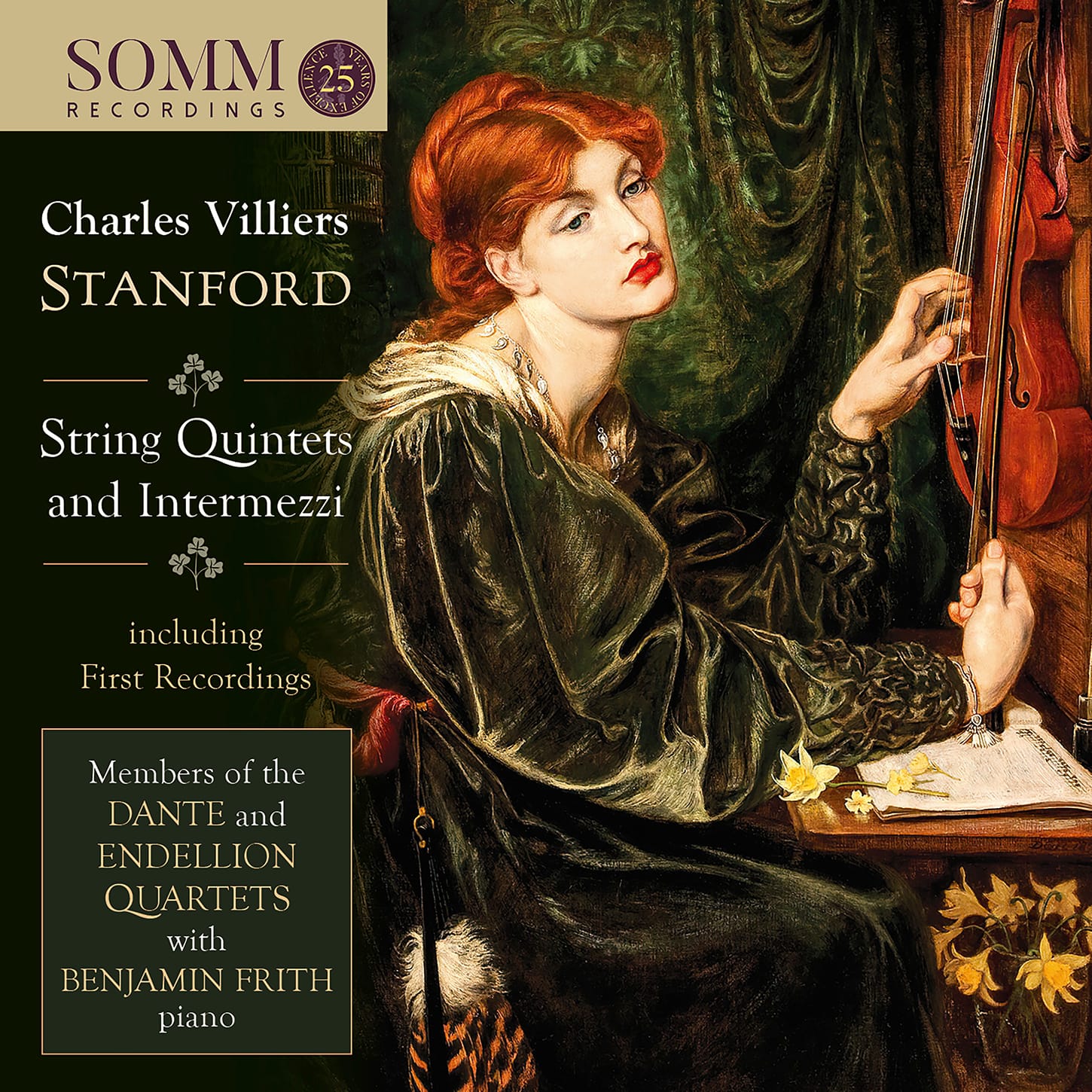REPOST. Stanford: Two String Quintets and Three Intermezzi
It is well-nigh impossible to find any criticism at all for this disc

This is a unique collaboration between members of the Dante and Endellion Quartets, together with pianist Benjamin Frith. Three members of the Dante Quartet (Krysia Osostowicz, Yuko Inoue and Richard Jenkinson) plus two from the Endellion Quartet (Ralph de Souza and Garfield Jackson) combine to form a quintet of preternatural ability. Both members of the Endellion have a link to Dante leader Osostowicz as they all spent their formative years at the Menuhin School. The sense of joy in renewed friendship via music-making seems palpable throughout.
Stanford's String Quintet No. 1 (1882) boasts a magnificent first movement, full of Brahmsian rigour coupled with a sense of endless outpouring. The performance is similarly impressive, sensitive to every nuance (the music sometimes turns on a sixpence, as it were). The music demands supreme discipline: this is a complex score, and the players here are in complete command. Linear exchanges are phenomenally calibrated, while the overall texture is, understandably, richer the the Quartets (the two violas' warmth sees to that). Around 5'10, there is a moment of mid-range lyricism that seems to echo that of Brahms' Second Symphony (I'm thinking specifically of the second subject of the first movement of that work). Anyway, see what you think:
The second movement is extraordinary - at least in this performance, there is an intensity I for one do not associate with Stanford. The music also references an old style of Irish singing (now known literally as “old style”). The solo lines originally played by Stanford's pupil John Krause with much freedom apparently here have lovely rubato without wandering into the regions of the untethered. There is beauty aplenty here:
Formally, the finale (there re only three movements) is remarkable, a set of variations beginning in tripping, (relatively) carefree fashion before the aviations expand out, interrupted by a Rückblick to the second movement. The movement plays with F major and D major/minor (reflecting the key centres of the first two movements, F major and D minor). Textures are beautifully varied, and the players here are miraculous, not least Krysia Osostowicz's first violin:
The slight (eight minutes) Three Intermezzi, Op. 13, arranged for cello and piano, separate the two Quintets. Richard Jenkinson on cello is joined by that wonderful pianist Benjamin Frith. Originally for Stanford's Cambridge friend Francis Galpin, a clarinettist, there was an ossia for violin, but on publication (by Novello), a cello version was included (on the basis of the popularity of Novello's edition for that combination of Schumann's Fantasiestücke, Op. 49). There is indeed much Schumannesque about these three delightful pieces, together the perfect interlude on this disc. The easy expression of the first is probably my favourite, but it is a close-run thing with the playful third. Here's the third:
The Second Quintet is cast in C minor and, like the cello pieces, receives its first recording here. This is in four movements; the first quotes Haydn (the 'Fifths" Quartet) put against stretches of troubled emotion, perfectly judged here by the combined members of the Dante and Endellion Quartets. The tension achieved is extraordinary, underscored by perfect tuning from all concerned; the end of this first movement is positively radiant:
The slow movement contains passages is almost suspended in time, its harmonies unutterably poignant; elsewhere there is a minuet offering a most imaginative take on dance:
The lightness of the Scherzo is lovely it exudes a Mendelssohnian elusiveness. English fairies, perhaps? The performance trips along nicely:
In complete contrast, the slow opening of the finale seems world-weary; the opening of the Allegro, at least to my ears, seems to reference the last movement of Brahms' First Symphony; not a literal quote, but the link is there:
A fine continuation of SOMM's Stanford series, the disc is available for purchase here (at Amazon); Spotify below. The recording, too, is fabulous; it is well-nigh impossible to find any criticism at all for this disc.
